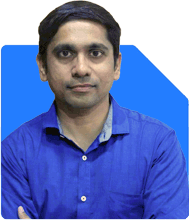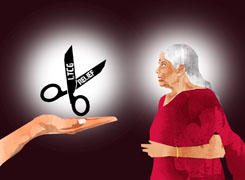My name is Vijay,45 yrs with 3 kids.i have zero knowledge about sip and mf.i can invest 75000 per month and looking for long term.kindly suggest sir.
Ans: Vijay, you're 45 years old, and with 3 kids, long-term financial planning is crucial. Since you're new to SIP (Systematic Investment Plan) and mutual funds, let's walk through the essentials and build a plan that aligns with your goals. You can invest Rs 75,000 per month, which provides a strong foundation for long-term growth.
Benefits of SIP for Long-Term Investments
SIP allows you to invest a fixed amount regularly in mutual funds. It is a disciplined way to invest, especially for beginners. Some key benefits are:
Rupee Cost Averaging: SIP spreads your investment over time, buying more units when prices are low and fewer when prices are high. This averages out your cost.
Power of Compounding: The longer you stay invested, the more you benefit from compounding, where returns generate more returns.
Convenient and Flexible: SIP is easy to set up, and you can increase, decrease, or pause your investments as your financial situation changes.
Importance of Diversification
When you invest in mutual funds, you're putting your money into a variety of assets like stocks, bonds, and other instruments. This reduces your risk, as not all assets will perform the same way. Your portfolio should be spread across different sectors and categories to minimize the impact of market volatility.
Portfolio Structure: Key Considerations
Before diving into mutual funds, it’s important to understand the types of funds available:
Large Cap Funds: These funds invest in large, stable companies. They're less risky but offer moderate returns. Suitable for long-term stability.
Mid and Small Cap Funds: These funds invest in mid-sized and smaller companies, which can offer higher returns but with increased risk. These are good for long-term goals but may be volatile in the short term.
Multi-Cap Funds: These funds invest in companies of all sizes. They offer a balance between risk and return and can be a core part of your portfolio.
Debt Funds: These invest in fixed-income instruments like bonds. They offer safety and stability, ideal for conservative investors or to balance the risk from equity funds.
Hybrid Funds: These invest in a mix of equity and debt, providing a balanced approach for investors looking for moderate risk and return.
Potential Risks in Mutual Funds
Mutual funds come with market risks, especially equity-based funds. Here's what you should be aware of:
Market Volatility: Stock market fluctuations can cause fund values to rise or fall in the short term.
Liquidity Risk: While mutual funds are generally liquid, some funds may impose exit loads or restrictions on withdrawal for a certain period.
Taxation: Gains from mutual funds are taxed based on the holding period. Long-term gains above Rs 1.25 lakh from equity funds are taxed at 12.5%. Short-term gains are taxed at 20%. Debt fund gains are taxed as per your income slab.
The Role of a Certified Financial Planner (CFP)
Working with a Certified Financial Planner (CFP) ensures that your investments align with your goals and risk tolerance. A CFP will help you create a strategy tailored to your situation. Here’s how they help:
Goal Setting: A CFP helps identify your short-term and long-term financial goals.
Risk Assessment: They assess your risk tolerance and suggest a balanced portfolio.
Regular Review: They review your portfolio periodically and suggest adjustments as needed.
Tax Planning: They also help you minimize taxes on your investments, keeping your returns maximized.
Disadvantages of Index Funds
You may come across index funds, which aim to replicate the performance of a specific index (e.g., Nifty 50). However, these have limitations:
No Active Management: Index funds follow the market and don’t try to outperform it. There’s no flexibility to avoid underperforming sectors or stocks.
Limited Customization: They don’t adjust based on market trends or your personal financial goals.
Lower Returns Potential: Actively managed funds have the potential to outperform the index by selecting high-performing stocks and sectors.
Disadvantages of Direct Mutual Funds
Direct mutual funds have lower fees since they bypass middlemen. But managing them yourself comes with challenges:
Time-Consuming: You need to actively research and manage your portfolio, which can be difficult if you lack time or knowledge.
Risk of Wrong Choices: Without expert guidance, there’s a higher chance of making mistakes in fund selection, which can impact your returns.
Lack of Guidance: Direct plans don’t offer the benefit of an advisor or CFP, who can guide you through market cycles and ensure your portfolio aligns with your goals.
How to Allocate Rs 75,000 Monthly
You can start with a simple allocation strategy that balances risk and return:
Large Cap Funds: Rs 25,000 for stability and moderate growth.
Mid/Small Cap Funds: Rs 25,000 for higher growth potential but with added risk.
Multi-Cap or Flexi-Cap Funds: Rs 15,000 for diversification across different company sizes.
Debt Funds: Rs 10,000 for safety and regular income.
This way, you can ensure your portfolio has a mix of growth, stability, and security.
Investing for Your Kids' Future
Since you have three kids, their education and future expenses should be part of your planning. A portion of your SIP can be directed toward funds with a long-term horizon, such as children's plans, or diversified equity funds, which can grow over 10 to 15 years.
Tax Implications and Planning
Ensure that you’re mindful of tax rules when investing in mutual funds. Gains from equity funds and debt funds are taxed differently, so it’s important to structure your withdrawals carefully.
You can discuss tax planning strategies with your Certified Financial Planner to minimize the tax burden.
Monitoring and Reviewing the Portfolio
Your investment journey doesn't end once you've set up the SIP. Regular reviews are essential. Markets change, and so do your personal circumstances. Your CFP can help you:
Rebalance: Ensure that your portfolio stays aligned with your risk tolerance and goals by adjusting the fund allocation as needed.
Tax Adjustments: Plan your withdrawals or switches in a way that minimizes tax liability.
Goal Tracking: Review progress regularly to ensure you're on track for long-term goals like retirement or your kids’ education.
Final Insights
Vijay, with a long-term perspective, Rs 75,000 per month can help you achieve significant wealth growth. Using a structured approach through SIPs in a diversified portfolio will allow you to balance risk and return. With the right support from a Certified Financial Planner, you can stay on track and make informed decisions.
The key to success in mutual fund investing is consistency, diversification, and regular review. Your willingness to learn more about mutual funds will empower you to make informed choices. And always remember that a Certified Financial Planner can guide you in the right direction to achieve your long-term financial goals.
Best Regards,
K. Ramalingam, MBA, CFP,
Chief Financial Planner,
www.holisticinvestment.in
https://www.youtube.com/@HolisticInvestment
































